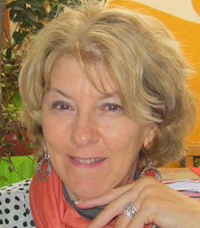Sun
A Mediterranean climate is characterized by warm to hot dry summers and mild to cool wet winters, although this year the amount of rainfall surpassed the seasonal average. The Mediterranean Sea helps to maintain a narrower range of moderate temperatures between summer highs and winter lows, which actually makes the French Riviera a more oceanic climate.
With an average of 300 days of sunshine, Nice is situated between the sea and the mountains, making it easily accessible and an ideal location. Under the warm Mediterranean sunshine, stroll along the Promenade des Anglais – a great place to walk, bike, jog, rollerblade, or just simply people watch. The pebbled beaches of Nice are a mix of private and public, for tourists to have relax, dine, and have fun in the sun.Following are sun safety tips to help you enjoy your summer:
(source: Skin Cancer Foundation)
• Seek the shade, especially between 10 AM and 4 PM.
• Do not burn.
• Use a broad spectrum (UVA/UVB) sunscreen with an SPF of 15 or higher every day. For extended outdoor activity, use a water-resistant, broad spectrum (UVA/UVB sunscreen with an SPF of 30 or higher.
• Apply 1 ounce (2 tablespoons) of sunscreen to your entire body 30 minutes before going outside. Re-apply every two hours or immediately after swimming or excessive sweating.
• Cover up with clothing, including a broad-brimmed hat and UV-blocking sunglasses.
• Keep newborns out of the sun. Sunscreens should be used on babies over the age of six months.
Sea
With 7 kms. of seafront, Nice is known for its iconic pebbly beaches and calm Mediterranean surf. There are 15 private beaches where you can rent lounge chairs and parasols, as well as plenty of public beaches, of which two are disability-friendly. There can be sudden, steep drop-offs in the footing, but generally speaking, the Mediterranean has mild waves and undercurrents.
The Mediterranean Sea provides the fresh catch of the day, and other seafood, to local restaurants. Nice is the only French city with Lyon to have its own appellation, “cuisine niçoise,” with specialties featuring fish. For the best overall deal, look for the “menu” or “plat du jour” at restaurants, offering two or three courses included in one price.
Savoir-Faire
The center of Nice is relatively compact, featuring Place Massena and Avenue Jean Médecin, the Old Town and its Cours Saleya, Place Garibaldi and the Nice Port, and the zone piétonne (pedestrian zone). Having savoir-faire in knowing how to navigate culturally can help to make your visit more pleasant.
Cultural Tips
Shopping – When you enter a small shop, you should say “Bonjour” (bon-jure) and on leaving, say “Merci” (mare-see) and Au revoir” (o-re-vwaar) as a basic exchange (thank you and goodbye) of politeness in showing good manners. “Bonsoir” (bon-swaar) is used starting after 5 or 6:00 p.m. and can be used as a greeting and farewell.
Language – Always say “Bonjour, Madame” (or Monsieur – pronounced misyeur) before jumping into a question and asking for information. As in English, say thank you (“merci”) and please (“s’il vous plâit” – pronounced seal-voo-play), as common courtesies. Trying to speak just these few words of French shows respect for the local culture and language. In public places, try to speak at a lower-than-usual volume, to be more private and discreet.
Lines/Queues – Generally speaking, the French don’t stand in line in an orderly fashion, while trying to funnel their way in from the side. It’s best to not be intimidated and gently forge ahead to maintain your position, if possible.
Restaurants – A 15% gratuity is usually always included in the bill (noted as “service compris”), although leaving a little extra is appreciated, but not obligatory. You will need to ask for the bill (l’addition, s’il vous plâit) when you are ready to leave, as the server is allowing you the time needed to eat and enjoy your dining experience, rather than rushing you to pay and leave. Servers are addressed as “Monsieur or Madame” (NEVER “garçon”).
Safety – Be street-smart and aware of your surroundings and the local scams. Guard carefully your purse and wallet, especially on public transportation and in crowded settings – even when zipped inside your clothing!
With a little “savoir-faire,” you too can start to feel a little more assimilated into the local culture and enjoy your travel experience – Bon Séjour!
Kim is a lifelong Francophile, and former French teacher. Having moved from the U.S. to the French Riviera, she enjoys writing about France and French culture on her blog, 24/7 in France. From the simple beauty of a Mediterranean sunset to her passion for all things French, Kim shows us that dreams can come true!
Kim Defforge is the author of "Solitary Desire: One Woman's Journey to France" and "Sun, Sea & Savoir-Faire: Travel Focus on the French Riviera".
Read Kim's other Expat Focus articles here.

